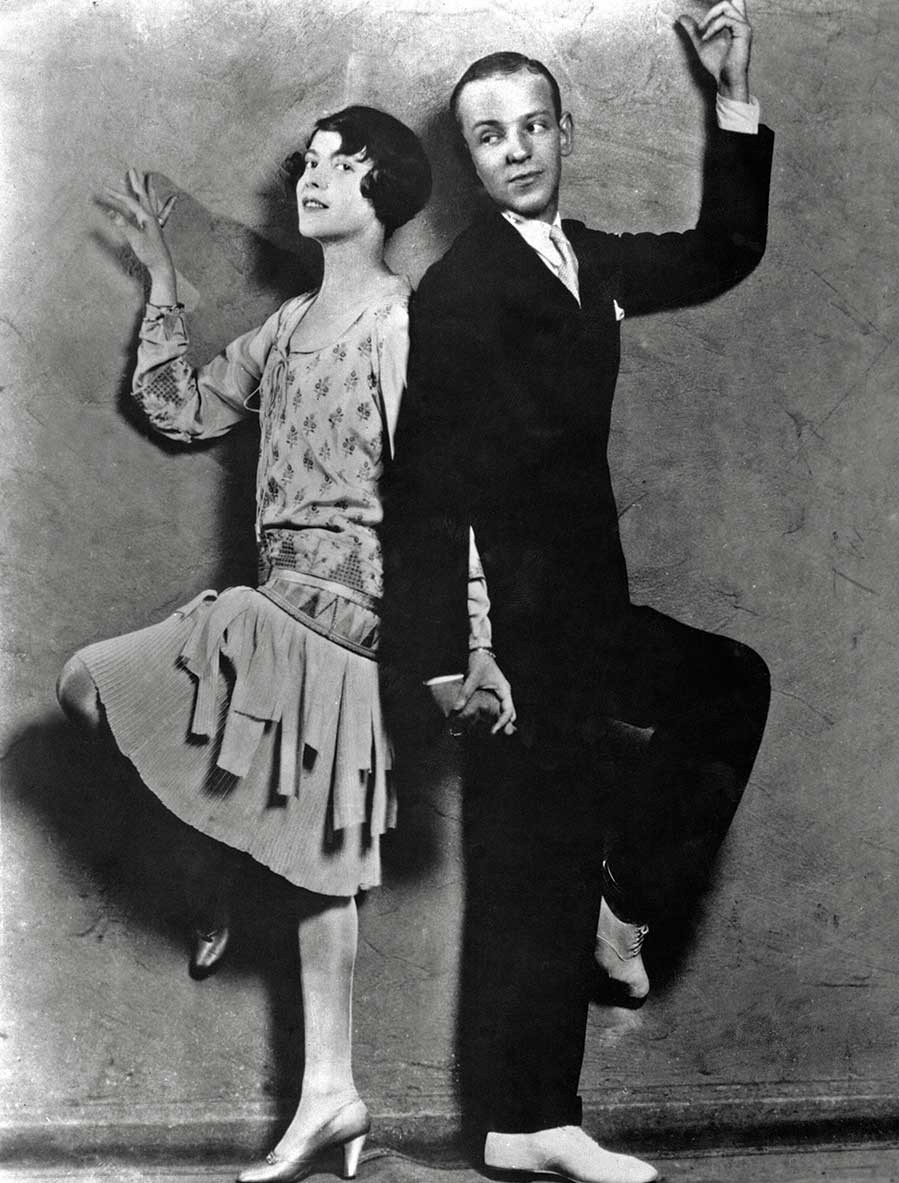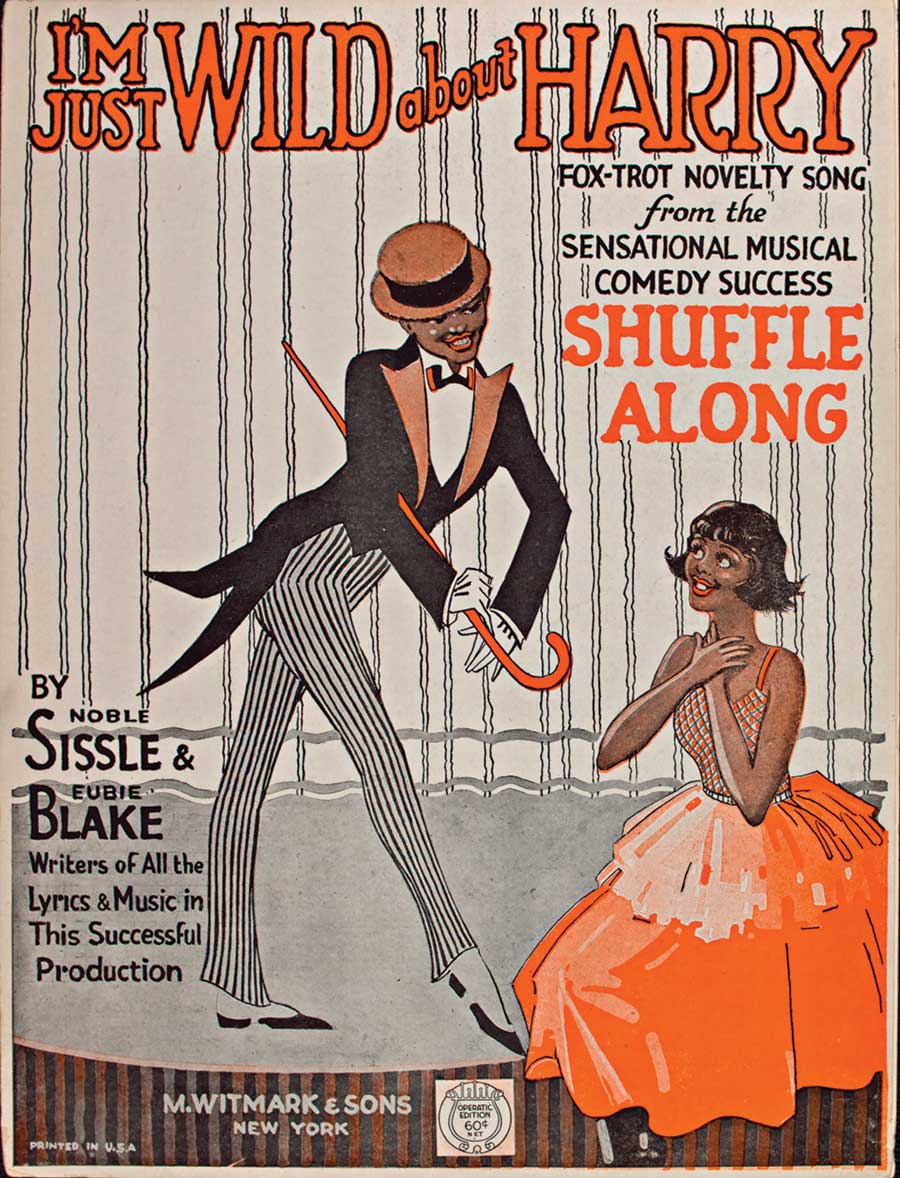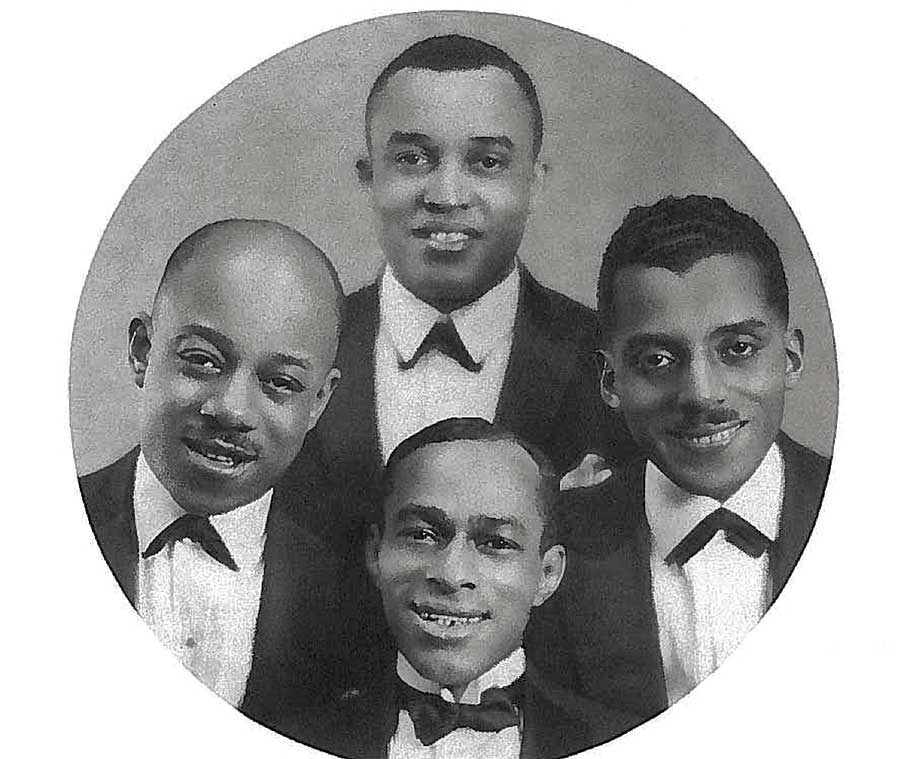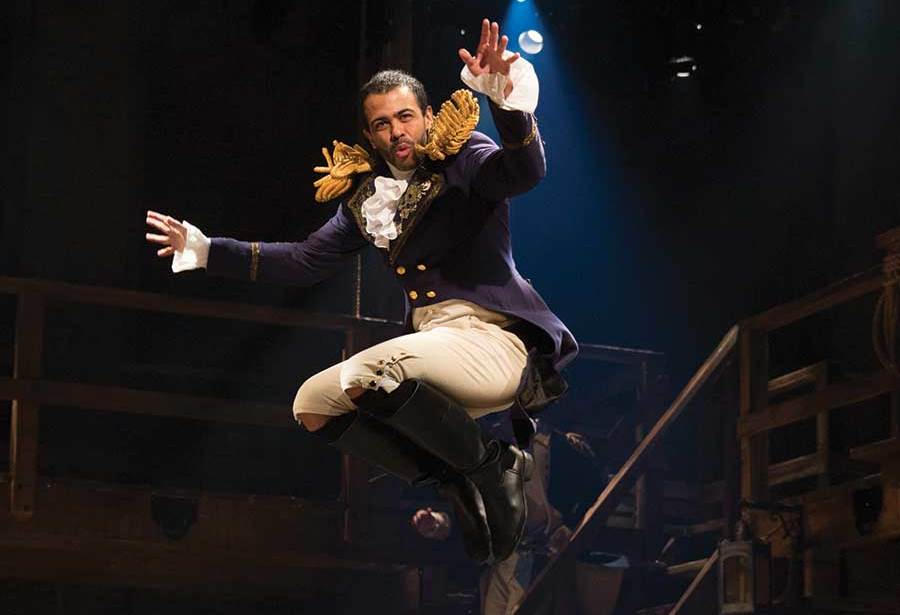For musical theatre fans, Hamilton has already become Holy Scripture. Only the professional contrarian who revels in being despised takes the show’s name in vain, as did the New York Post’s Michael Riedel in a rare note of dissent. Hamilton deserves the status: It is one of the most innovative, energetic, and expert pieces of musical theatre in human history. Part of the aura surrounding it is the sense that we are seeing history in the making: that this show marks rap’s entry into the basic language of American musical theatre.
Hopefully it will. But might Hamilton augur something more? For 125 years, American musical theatre language has been driven by serial infusions of black pop energy, creating the sound of Broadway so familiar today, including manifestations now processed as thoroughly “white.” Given that hip-hop has been the mainstream for young Americans of all colors for at least 20 years, isn’t this when we would expect Broadway music to come in for its next injection of, as it were, “flava” and evolve into a whole new direction?
Actually, not. The pitfalls of presentism acknowledged, it is worth venturing that rap is crucially different from the musical genres that transformed show music in the past. Rap is likely to take its place in Broadway music but not transform it, because for all of its glories, rap offers more limited dramatic possibilities than ragtime, jazz, or even rock.
Such a judgment obviously risks recapitulating the blinkered prejudices of people with three names in America just past the Spanish-American War, clutching their pearls as ragtime became theatre music’s lingua franca. The ragtime we now hear as a quaint, courtly music reminiscent of straw hats and lemonade was the rap of the pre–World War I era. Encountered by most not as elaborate piano pieces like Scott Joplin’s but as jolly stage songs with sassy lyrics, ragtime was considered a threat to bourgeois propriety. Ragtime “creates in the young a distaste for that which is more staid and solid,” one critic huffed. “Its victims, in my opinion, can only be treated successfully, like the dog with rabies, with a dose of lead,” wrote another.
What all the fuss was about was the “ragged” time that gave the form its name—the slight displacement of the strong beats in the melody from the regular pulse on the bottom, creating an infectious sense of rhythm termed syncopation. To our ears, this oppositional quality in the beat—which makes it seem as if we are moving and dancing in and against the music rather than squarely driving it along ourselves solidly on beats one and three, jig style—is the heart of music itself. But to those experiencing it for the first time, it was a novel and almost disturbing sensation; a typical review noted that “the catchy ragtime refrains kept the head nodding and the toe tapping all over the theatre by means of their irresistible rhythm.” Today this reads like someone marveling that a dessert is sweet, but before ragtime, American pop consisted of waltzes, weepy ballads, marches, and jigs. There is a reason there are no recordings of loving reconstructions of musical theatre scores that entranced Americans in the Gaslight Era, such as Robin Hood (1891) and The Prince of Pilsen (1903). These scores, despite passing charms, qualified largely as second-drawer Gilbert and Sullivan.
What was missing was that, in a post-Reconstruction America, these scores had yet to benefit from a black touch. The gift arrived in the form of Clorindy in 1898. It was composed with ragtime essence by classically trained black violinist and conductor Will Marion Cook, who was convinced that Broadway would be where black music could make a decisive mark on America. He was right: The score’s syncopation, set in stirring choral arrangement and accompanied by correspondingly “raggy” dance moves, lit up white attendees in exactly the way the rap in Hamilton gets audiences going today. Cook later recalled, “At the finish of the opening chorus, the applause and cheering were so tumultuous that I simply stood there transfixed, my hand in the air, unable to move.”
From here on, ragtime gradually became a standard element of Broadway’s musical language. It started in trickles, with ragtime numbers interpolated into conventional scores as novelties. A typical example: In the otherwise conventional operetta Babes in Toyland in 1903, Victor Herbert had a male singer “rag” “Rock-a-bye Baby.”
By 1914, Irving Berlin could compose a whole score infused with the ragtime “language,” Watch Your Step. Here is the first Broadway score that, heard a hundred years before Hamilton hit the boards Off-Broadway, sounds like what we now think of as American musical theatre. Its approachability lies in that devilish syncopation: the contrapuntal duet “Play a Simple Melody,” still familiar, tells the story, setting an old-fashioned melody someone could have sung in Robin Hood against a jagged, hot little rag that makes you—gasp!—want to tap your foot. Hot on the heels of Watch Your Step, Jerome Kern (with librettist Guy Bolton) initiated his foundational series of small-scale musicals staged at a certain tiny Princess Theatre, populated with studiously respectable middle-class personages giving in to songs like Very Good Eddie’s (1915) “I’ve Got to Dance,” “Left All Alone Again Blues,” and even gentle numbers such as “Some Sort of Somebody,” all of which have a lift-of-the-heels lilt on beats two and four rather than one and three, a sound that’s more Joplin than Sousa. By 1920, ragtime was no longer one piquant element a Broadway composer might break out now and then, but Broadway music itself, to an extent a Gilded Age theatregoer would have found inconceivable.
Meanwhile, ragtime, with a strong shot of blues harmony, had evolved into jazz: faster, louder, and busier—in a word, hotter. The guardians of culture remained uncomfortable, especially as jazz was even more vividly associated with black people and sex (the original meaning of the very word jazz being “to have sex with”). And once again the new music transformed Broadway musical style. The starting point of this new wave was George Gershwin’s Lady, Be Good in 1924, whose centerpiece, a jagged, rhythmically complex tune called “Fascinating Rhythm,” would have been unthinkable in any show written before.

But this was actually only the beginning of Broadway jazz in an official sense. The Gershwin historiographical tradition tends to imply that this jazz infusion sprang from Gershwin himself. But he had been writing theatre music for several years before this, and playing through his early stuff today, one is perplexed that almost none of it sounds anything like the Gershwin we know. By the time Gershwin’s show music took a new turn in 1924, black theatre composers had been doing so for three years running. Gershwin, fond of sitting at the feet of black stride piano giants, was the follower here, not the inventor.
To wit, it was black people who brought not just ragtime but also jazz to Broadway—in 1921. Eubie Blake and Noble Sissle’s all-black Shuffle Along (a revised version of which is now running on Broadway and opens April 28), initially considered a long shot, sequestered in a theatre blocks uptown from the theatre district, took New York City by storm, crackling through items like “Baltimore Buzz,” “Bandana Days,” and “I’m Just Wild About Harry” (a song today hardly considered hot stuff but saliently syncopated for 1921). The show initiated a 1920s vogue for black shows with jazz scores and hot dancing; as early as 1922, a Ziegfeld Follies song observed that “It’s Getting Dark on Old Broadway,” sung by (white) Gilda Gray. Just as Lady, Be Good was in development, the black show Runnin’ Wild was finishing a long run, introducing the Charleston as both a song and a dance.
This jazz infusion created the uptempo “showtune” and bluesy Broadway ballad as we know them, as well as the indefinable quality of “Broadway electricity” that distinguishes American musical theatre scores from their European equivalents. Such ’20s sensations as No, No, Nanette and the early hits of Richard Rodgers and Lorenz Hart, Cole Porter, and DeSylva, Brown, and Henderson (of Good News fame) sounded like “jazz” to contemporary ears. Many people just didn’t get it. Here is London critic E.A. Baughan on No, No, Nanette of 1925, with music written and scored very much like Lady, Be Good’s:
Saxophone players (in the limelight) worked with the energy of a savage religious festival, and when there was any chance that you might mislay the melody it was emphasized by the brass with mutes. A little of a muted trombone or trumpet is good for certain effects, but a whole melody played as if the instruments were melodious steam saws cuts into my brain and produces a mild nerve storm…If this piece be ever discovered in the far future it will be made the text for learned discourses on the nervous breakdown of the American and European nations after the great war.
But the die was cast and the rest was history: The underlying language of musicals ranging from Anything Goes to Guys and Dolls to Sweet Charity traces its genealogy to the shot in the arm that Shuffle Along and its progenitors gave to American theatre music.

Reading that peculiar and backward critical assessment of No, No, Nanette’s music now is a good reality check as I think about the innovations of Hamilton and make the case that rap has limited compatibility with musical theatre. With the shortcomings of earlier gatekeeping judgments now so obvious, we must beware of reproducing the same notions that music from the streets “isn’t really music” or is best off “in its place.” After all, there is an even more recent precedent for the American musical incorporating a sensibility found alien at the time by many: when the musical met rock.
When Hair introduced the rock of the late ’60s (as opposed to rock ’n’ roll) to Broadway in 1968, the music felt as primitive, sexual, and unclean to fans of South Pacific and The Pajama Game as rap still does to many beyond a certain age today, despite its increasingly mainstream status since the late ’90s. And despite the meteoric success of that show, an opinion later common among thoroughly enlightened people was that Broadway and rock were inherently incompatible. Musical theatre historian Ethan Mordden wrote that rock was “intense but narrow, too complete in itself to adapt to the needs of a larger form that would have to contain it.” The late theatre composer Elizabeth Swados opined that “the elements that make good rock make bad theatre. You should not want to get up and dance with a character who is not even supposed to know you’re there.”
As plausible as such opinions could seem, subsequent developments invalidated them. To be sure, Broadway has only fitfully incorporated rock’s ostensible antiestablishment cultural commitment, its focus on the adolescence, or its most high-volume sounds. This has been predictable: The American musical, a capitalist enterprise expensive to mount and requiring years-long runs plus tours to make a serious profit, is an inherently conservative form. That it does not reflect downtown sensibilities ought occasion no more comment than the fact that musical theatre didn’t follow jazz into its evolution into bebop.
But to say that the sound of the Broadway musical has not been transformed by rock is to not have one’s ears open. From Stephen Schwartz to Andrew Lloyd Webber, from American Idiot to Hedwig and the Angry Inch, the very term “rock musical” is now meaningless, in that the rock sensibility is now so default in the form that even a glum story about a suburban woman’s battle with clinical depression (Next to Normal) was couched in a rock idiom; Lloyd Webber’s current hit, School of Rock, only further makes the point about rock’s ubiquity and essentially innocuousness. Historian Mark N. Grant’s comment that “a new show cannot be commercially produced as a musical today on Broadway unless it is rock groove-based” may be overstated, but that a writer would even venture the statement should be evidence enough that the Broadway score without that reference to rock is the exception, not the rule.
Why not rap, then? Today, with rap played at even the most vanilla of weddings, with even people over 50 happily taking to the dance floor, it’s safe to say that most of rap’s listeners are white, and that rap has become a staple musical form for Americans now both young, youngish, and even many now classifiable as “older.” So isn’t it time for show music to start rapping as much as it started rocking 50 years ago? Notably, this would not mean a Broadway language devoid of song, as rap often alternates between sung figures and spoken word, as Hamilton does. Why can’t this be Broadway music’s latest new beginning?
Because rap is, despite the artistry and craft it requires, different. For one, rapping is not technically music—it is stylized speech. This will limit rap’s application to musical theatre, because speech styles cannot permeate a culture and cross its demographic boundaries as easily as musical styles.
To sing is automatically to step away from one’s most natural form of expression, speaking. It feels natural, then, to sing in ways unconnected to one’s everyday vernacular. Operatic singing is the most obvious example. Less overt is the way that a black American cadence is tacitly expected of most pop singing in English, to the extent that non-American singers ranging from Mick Jagger to Amy Winehouse to Adele spontaneously sing in a dialect spoken by no one they knew when learning how to talk, with Iggy Azalea even mimicking black English grammar so well that experts on the dialect are impressed.
It’s harder, though, to talk much differently than we normally do, because it is more integral to our personhood. All people talk; many, even most, do not sing. It is natural for humans to talk all day; no humans sing all day. Speech is subconsciously controlled; music involves more conscious engagement. A great many people enjoy many kinds of music but speak only one language. We are the way we talk to more of an extent than we are our music.
The characters in Next to Normal can express themselves in rock because we readily accept people singing in styles unlike their speech. Those characters would seem much less plausible expressing themselves in rap, even in rhymes as cleverly composed as those written by Lin-Manuel Miranda for Hamilton, because the rap style of expression would be so far from the way those contained, suburban whites would ordinarily express themselves. Because speech is so intimate a marker of cultural membership (as well as individuality), we would be disinclined to accept as much of a gulf between the natural and the stylized in the speech of characters in Grey Gardens, Passion, or Fun Home as we do in their singing.
Rap would be limited as a theatre language in ways more specific as well. Mordden wrote, “Rock inevitably carries certain cultural associations in its very sound, whatever the lyrics say.” This is even more true of rap. Its association with young black people is actually not the issue—rap’s warm welcome by white men, especially, makes the music more race-neutral by the year. But a confrontational cadence is the warp and woof of rap. Even the most “conscious,” constructive, or even puckish rappers retain a chip-on-the-shoulder tone in their delivery (not accidentally termed “spitting” among fans). Each rhyme at the end of a line implies a “So, there!” Rapping is, to an extent, sport.
This works so well in Hamilton because most of the characters are men in competition. It isn’t an accident that two debates between Hamilton and Jefferson, amenable to recasting as rap battles, are among the high points of the show. But argument, topping, and display are only one part of being human—or of being a character in a musical. In a musical like Fiddler on the Roof, say, rap could work in scenes of strife between Tevye and his daughters. But for tenderer, rangier scenes like “Do You Love Me?” or “If I Were a Rich Man”? Not so much.

from left: Eubie Blake, F.E. Miller, Noble Sissle, and Aubrey Lyles. (Photofest)
What’s more, rap is inherently a vernacular medium. It arose from the streets and is steeped in a long-established performance practice that reflects its origins. But the vernacular is only one facet of humanity. Again, this works in Hamilton because of the theme of Hamilton’s status as an immigrant battling his way into the mainstream, and just as much because of the mostly black and Latino casting. But the notion of Founding Fathers rapping still requires a certain suspension of disbelief, feasible partly because of the distance in time of the events. That suspension would be harder to pull off for stories in times more immediately felt. Vernacular expression would probably conflict with characterization in a musical about suffragettes; in almost anything Stephen Sondheim or even Jason Robert Brown would write; even in a Ragtime. Though black Coalhouse Walker Jr. prides himself on striving, rap would no more work for him than for the white characters.
In short, rap is most likely to enter the Broadway musical’s toolbox as a handy and welcome new option. It will be most artistically valuable as a medium for depicting young people in vernacular contexts. For example, until now, black pop composers have justifiably tended to feel that Broadway aesthetics were alien to what they seek to express. And indeed, contemporary young black characters expressing themselves in the musical language of Alan Menken or Flaherty & Ahrens would feel hopelessly fake in our modern, diversified musical climate. Paradoxically for a show set during the American Revolution, what Hamilton does is open up a space for new black musicals that are neither jukebox celebrations (Motown) nor set in the distant past (The Color Purple, Dessa Rose). For instance, rap is clearly the language that a musicalization of a Spike Lee movie—something long overdue—would be written in.
Rap will also be useful beyond black and Latino voices. A West Side Story for today would most effectively be written in hip-hop, for both Jets and Sharks of whatever race, rather than any now-conventional musical theatre language. Rap also offers the possibility of hybrid scores, in which characters for which rap is plausible “spit” their lyrics while other characters sing in other musical theatre languages (this is already in effect in much of Hamilton, in fact). Working out such a division of labor in a multiethnic, studiously contemporary piece like If/Then would be interesting, for example.
But rap is a direction the Broadway musical as a whole likely cannot follow, and the heterogeneity of show music compared to the old days is not the only reason. There is a musical commonality between scores from shows as tonally varied as Fun Home, Aladdin, School of Rock, Finding Neverland, Kinky Boots, Matilda, Something Rotten, and The Book of Mormon. For all the new sounds they’ve incorporated, they all descend from the core Broadway language that Kern in the 1920s called “good Jewish music,” but which, as we’ve seen, is as much black as Jewish: the showtune, born of cultural miscegenation during the first quarter of the 20th century. Rap, despite its crossover appeal, is something more distinct from the showtune than even Hair’s score was. Which is why rap on Broadway, while more than welcome, may be less a game-changer than one new move out of many.
Critic and commentator John McWhorter teaches linguistics at Columbia University in New York City.


